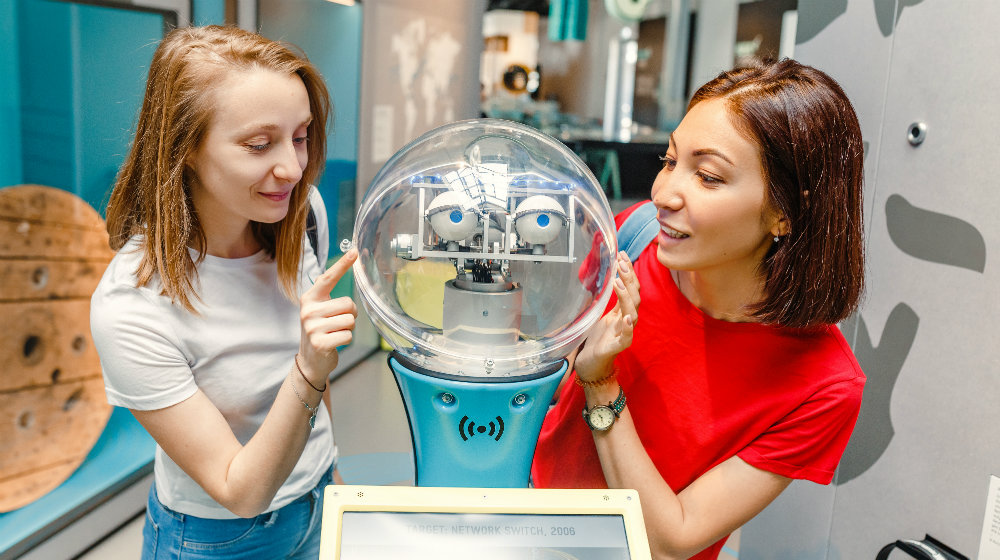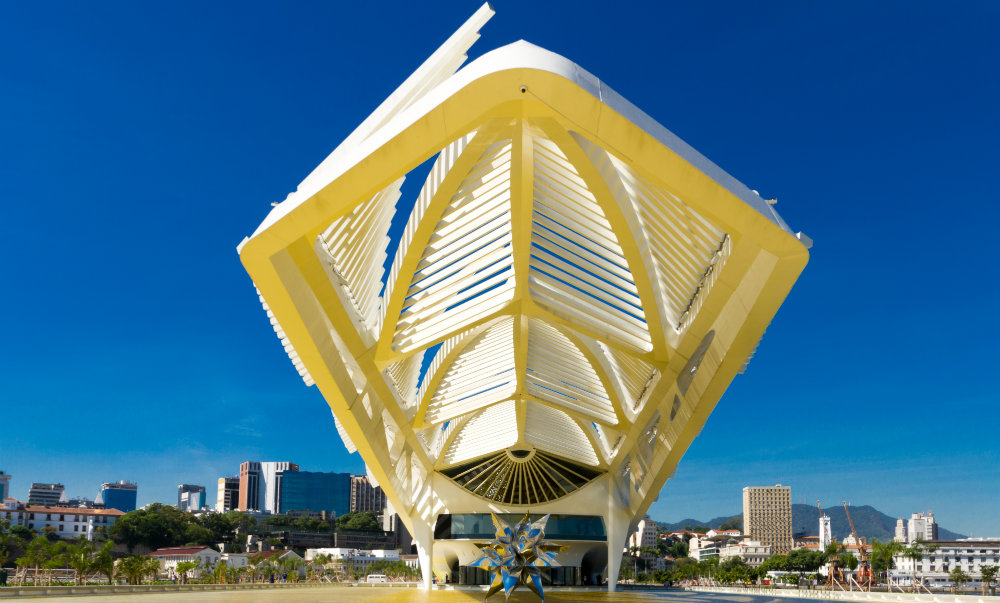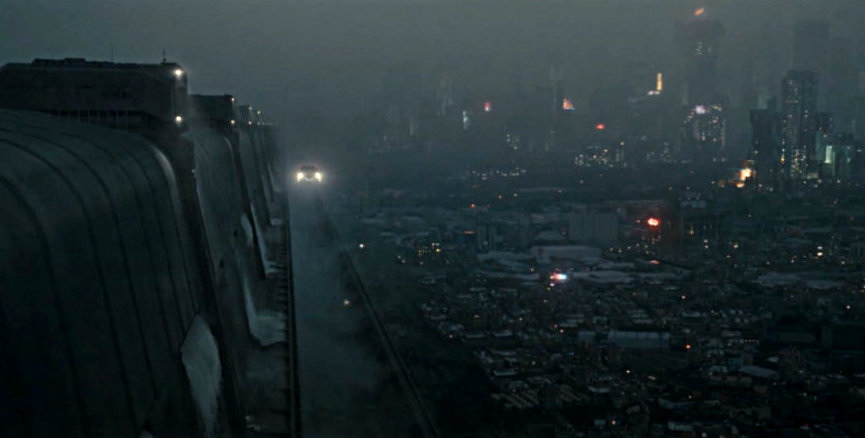What Will The Future Hold For Museums?
ArtandSeek.net October 26, 2018 12Elizabeth Merritt is one of the first people to apply the study of futurism to museums. She’s Vice President of Strategic Foresight & Founding Director for the Center for the Future of Museums at the American Alliance of Museums. And she’ll be in town Monday for the TACA Perforum’s conversation about how arts groups can meet community needs.
For State of the Arts this week, I spoke about how museums might prepare for the future, and what they can do to change it. You can click above to listen to our conversation that aired on KERA FM. Or read a longer, edited version below.
We’ve also invited TACA panelists to guest blog for us this week. You can find Merritt’s post on how museums can empower communities here. Others in the series:
- What to expect at the Perforum this year, by Zannie Voss, of SMU’s National Center for Arts Research
- Compelling others to carry on a dance legend’s legacy, by Ken Tabachnick, of Merce Cunningham Trust
- How art and artists can transform communities, by Carlos Contreras, poet and Director of Marketing and Innovation for the City of Albuquerque.
You’re one of the first people to apply the study of the future to museums. Can you explain what you do?
I take the techniques of strategic foresight to help museums understand how the world is changing around them. I help look at trends or notice significant events that may disrupt our path into the future and then help them turn those into stories of all the different ways the world could turn out
And when you say trends, you’re looking at trends mostly in society and how they’ll affect museums. You seem less concerned with the trends that are inside museums themselves like say, the latest in conservation technology. Is that accurate?
Correct, I’m mostly looking at the world outside museums but that’s society, it’s also technology, it’s the economy, it’s what’s happening in ecology, our natural world and political and policy trends.
Usually museums are more consumed by what exhibitions they’re going to be showing, how they’re going to raise money to keep the doors open. Why should a museum today stop down and pay attention to things like projections about climate change or the progress on autonomous cars?

Elizabeth Merritt
The reason the American Alliance of Museums started the Center for the Future of Museums is we noticed, over the decades, as we tracked the operations of some of the best museums in the country, they consistently had problems with their long-term planning because what they called long-term planning often was only looking three or five years into the future. And they’d put a lot of time and effort and a lot of money into a certain direction, only to find that in 10 or 20 years, they ended up in the wrong place. So to take your initial examples, they might be putting up exhibits that didn’t meet the interests or needs of the community. They might find that they were using techniques for raising funds that didn’t match the interests of philanthropists.
Your most recent annual report paints three scenarios for the future and it spins out the possibilities for how things that we think about today, like income inequality or digital privacy concerns, might play out in the future. One of these scenarios is really, super dark. One’s optimistic and one’s kind of middle-of-the-road. How can museums use these scenarios?
Yes, so any organization can use scenarios to try and future-proof their planning and this is a technique that we borrowed from industry. Shell Oil has scenarios it uses to guide its planning. Intel has an in-house futurist and when museums look at these scenarios, they can use it to ask themselves, ‘Right, if we find ourselves in this or that future, how would we make the best of it, how would we thrive in those circumstances?” They can also ask themselves, ‘If we want to go there, how can we try and make that what happens and if we don’t like it, how can we try and make sure we’re not going in that direction?
So can you quickly describe, for example, the really dark, dystopian future that you outlined?
Those are almost too easy to write. So, economic inequality. We’ve been seeing a trend toward income and wealth inequality in the U.S. for the past few decades, and that tracks also the decrease in socioeconomic mobility. So you can easily see a future in which the wealthiest 1 percent of American households are thriving, but there’s a real struggle for a large number of people at the bottom to have adequate access to a good education or to employment opportunities or to arts and culture. There are also pretty dark projections about the worst potential side of climate change.
So this helps museums focus on the externalities, the needs of their community to say, OK, actually these are things that are happening in our backyard that are affecting the people we serve. How can we make sure that’s not the future they’re living in? Or if we starting going toward that direction, how can we survive and what can we do to combat wealth inequality or help ameliorate the effects of climate change?

Visitors interact with robot assistant in Berlin, Germany. Photo: Shutterstock.com
You’ve written that artificial intelligence is going to have a huge impact on museums. What could that look like?
Well, artificial intelligence is having a huge impact on our life in general. Right now, AI technologies are starting to shape the way we live. We have algorithms embedded in our justice system, from predictive policing to setting bail to informing sentencing. More and more schools are using AI algorithms to decide what students they admit or employers are using it to decide who gets interviewed or hired.
So it’s affecting the world as a whole. Museums, in some ways it’s affecting in really positive ways because there are really cool things artificial intelligence can do. You can make AI chatbots that serve as intelligent interfaces between the enormous amount of data you have and people who’d like to query that data and explore, but don’t have specialized programming information.
I know of a couple museums that are beginning to experiment with facial recognition technology so that they can actually recognize their members and feed them personalized content as they move through the museum.
But in a larger sense, it gives museums an opportunity to begin educating people about the power and the potential perils of this technology so they can make informed choices going forward so they can decide, for example, as citizens and voters, how they want to weigh in on the policies we’ll be establishing in coming decades to try and control how it’s used.
You mentioned that you’ve seen some interesting projects in AI in museums. Can you give me an example?
Yes. One of my favorites is at the Museum of Tomorrow in Rio de Janeiro, Brazil. This is a museum that’s dedicated to helping people think about the future, which is why it’s one of my favorite museums. They have created an artificially intelligent-powered chat bot called Iris Plus. When I get to the end of exhibits, I chat with Iris and she asks me what I’m most concerned about in the future. Is my worry about clean water in my neighborhood? Is it about safety? Is it about whether my children are going to get a good education? And then she gives me recommendations. She says, “Well OK, given where you live, here are these organizations that you might want to be involved in.” Maybe you want to volunteer with this group or contribute funds to this other organization because they’re working to help the kind of future that you said you want.
That is so cool. Have they done any research about whether people take action after leaving the museum, after talking to Iris?
That is the next step in the project. I’m waiting to hear about that. We’re actually bringing one of their technologists, Daniel Morena, to the U.S. in a couple of weeks to a confabulation that we’re having about artificial intelligence in Miami and he’s going to be giving us an update.

Museum of Tomorrow, designed by Santiago Calatrava, in Rio de Janeiro, Brazil. Photo:Ronaldo Almeida / Shutterstock.com
It kind of blows my mind to think about some of these scenarios. Is that part of the fun of it for you?
Yes, of course. One of the wonderful things about futurism is because it’s encouraging you to exercise your imagination in ways that have practical, real-world applications. When I go to work with people in museums, often, they’ve been chained to their desk and trying to deal with this pile of paper and this problem that’s going to be there tomorrow. And I go in and I give them space, and I give them permission and encouragement to spend some time letting their imagination loose. By giving yourself room to play and imagine, you actually can do better things for your museum.
That sounds like so much fun. So I have to ask, how do you think museums are going to be different in 20 or 30 years?
I love to answer that question by encouraging people to look in their pocket and pull out something they probably have there that’s called a phone, and if you’d ask me 30 years ago how phones were going to change, I probably wouldn’t have told you that they were going to be recording devices and cameras and things that you use to browse this thing that doesn’t exist yet called the internet. I think that museums are going to expand their boundaries and become more multipurpose as well.
We actually did an exercise that last year, with a lot of people in the field where we took one of the scenarios you mentioned, the probabilistic future, the mainstream thing that says, if everything keeps going the way it’s going now, here’s what the world would look like, when we got to year 2040. That’s a pretty challenging future, actually.
We said to people, if that’s the future we live in, how would museums be thriving in that future? How would they be making the world a better place? And they came up with all sorts of great stories. Somebody said, “OK, in 2040 there are going to be over 2,000 schools serving half a million kids ages K-12 who are going to school in a museum.”
Another person said, “I think there’s going to be over a thousand cognitive health-and-well-being centers that are helping their communities.” One person got very specific and said, “I think 12 percent of residents in Newport, Rhode Island in the year 2040 will be given prescriptions by their doctors to visit a museum.”
So I really think they were illustrating the possibilities for how museums could be broadening their scope and impact in the future.
It makes me think that you can study possibilities for the future, but you still can’t predict it.
This is one of the wonderful things. People ask me what futurists do and I always start by saying “We don’t predict the future” because that would be implying that we can know what it’s going to be, and we can’t. It also takes off the table one of the main purposes of futurism, which is to make people realize that they can take action now to create the future they want to live in.
Your work is mostly directed at museum professionals, so what can the rest of us take away from it?
Actually, one of the things that’s really pleasantly surprised me since I’ve begun doing this work is the fact that I consistently have conversations with people in a lot of sectors and they say, “You know, I’ve been reading your reports” and if I just changed the noun, if I take out the word “museum” and I drop in the name of my field and it might be libraries and it might symphony orchestras and it might be ecology, it works just as well for me and my colleagues.
I think it’s because what I’m doing is saying, “Here are the trends and here’s how they’re shaping the world around us, and here are the implications for us as a society”.That’s all generally applicable and then I get down to the specific implications for museums, it’s often true for other kinds of organizations as well.
So for example, if I say, one of the implications of the fact that we’re struggling with creating reform in our educational system and creating a new educational era that is more based on kids’ passions and more based on teaching collaboration and creativity and critical thinking, that’s not just an issue for museums. That’s an issue for parents. It’s an issue for employers that are trying to develop a new workforce. It’s an opportunity for a lot of different organizations that can help fulfill those needs.

Our future, according to ‘Blade Runner 2049.’ Photo: Time Warner
Why should we care what happens to museums?
I think we should all care because American museums are powerful public resources that we’ve cultivated over the past two centuries with both private and public support. They represent a multi-generational investment in our future. We’re living in a time of rapid, profound change that’s challenging a lot of the basic infrastructure that supports civil society – schools, libraries, journalism, as well as museums. But it makes more sense to put some more time and thought into preserving that infrastructure and putting it to work to meet our present needs rather than letting it decline.
If there’s one thing that a museum could do today to future-proof itself, what would that be?
I would say it is to set aside a little time every day to read the news and just soak it in and say, “What’s happening in the world?” It may not at first seem like it has directly to do with their work but the more you have a better idea of what’s happening outside the walls of your institution and what people who live in your community are dealing with, the more you come back with new ideas about what you can do different or do better. That’s what’s going to future-proof your operations. If you stay relevant, if you stay helpful, if people look to you as being something that makes their lives better, they’re going to support you.









